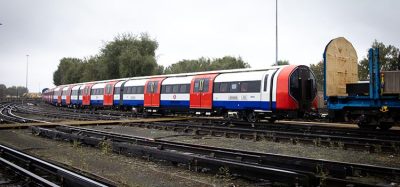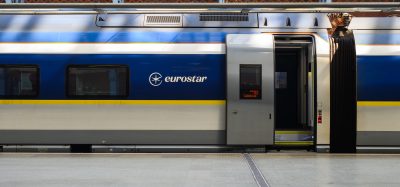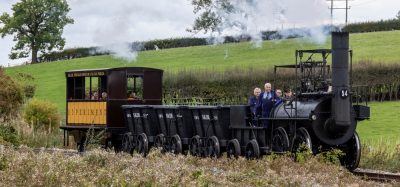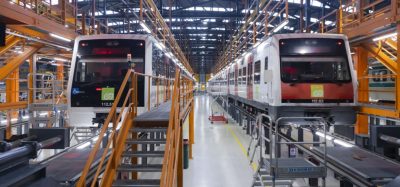Digital strategies help TOCs provide better customer experience and service
Posted: 11 September 2019 | Global Railway Review, Peter Gough (ORM) | No comments yet
Historically a lack of investment in digital technology and connectivity, coupled with outdated attitudes from those at the top, has seen the rail industry unable to keep up with modern, digital customer expectations. Global Railway Review speaks to Peter Gough, Managing Partner and Founder of ORM, to discuss the ways in which rail is finally embracing technology in a bid to catch up with other sectors and provide a connected, digital experience for passengers.


How did ORM start working within the rail sector?
We started working with First Great Western (FGW) which was one of the biggest UK rail franchises six years ago. They wanted help with understanding their analytics around their website, specifically around the mobile web journey. We helped them to make sense of their data so they could see insights such as customer dropouts, etc.
Then we started to influence their user experience and customer journeys. This is when we realised that rail was very behind the times when it came to the digital customer experience. The relationships the train operators had with their customers were very transactional and they didn’t know who their customers were at that point in time, or anything about their preferences.
We could see that train operators had a desire to move to more personal relationships with their passengers. So, we helped FGW with new initiatives, including defining their digital strategy. This enabled them to develop a vision around what they needed to do to move from a transactional to a more personal relationship with their customers. We were also fortunate enough that this timed perfectly with a franchise extension and subsequent rebrand to the Great Western Railway (GWR) brand we know today.
What main challenges do your rail customers ask for help with and do they all share the same problems?
Fundamentally, these transport operators are using decades-old business models, rolling stock and legacy technology, added to that, is the complicated franchise model we have in Britain. The systems that power the various services are powered by many vendors and industry data sources are not connected or integrated.
Customer expectations are moving faster than what the rail sector can deliver. Customers want real-time information on their mobile, but the reality is, this is a harder job to do than people may think.
The main challenge is to make it all work seamlessly together, akin to the retail sector, so we can provide a consistent and seamless experience across the digital and physical channels. The likes of Amazon and Uber have set the customer experience bar high, leaving every other sector, including rail, playing catch up.
Customer expectations are moving faster than what the rail sector can deliver. Customers want real-time information on their mobile, but the reality is, this is a harder job to do than people may think.
Take, for example, a train that is running late. Passengers may assume (and blame) the rail operator for the delay. Yet, if it is down to a fault on the line, this is an issue that is dealt with by Network Rail. So, in this instance, there’s an added layer of information that needs to be passed from one organisation to another and eventually to the customer. Typically, these systems don’t talk to each other, so passing contextual information down to the customer in real-time is a huge challenge.
However, things are changing. All the train operators we work with are striving to provide better customer experience and customer service. New technology is rapidly being adopted by every transport operator, which is helping them to improve the elements of the customer journey that they CAN control. And we’re seeing the introduction of mobile tickets, the use of personalised itineraries and a gradual acceptance towards rail being part of the multimodal experience.
Do you think there are still areas of the rail industry that lack an understanding of how digital solutions can help the industry improve?
The rail industry is still operated by people who have been in it for a very long time. A lot of decisions are made by people who don’t understand digital technology or perhaps appreciate what it can now do, so there does seem to be a lack of understanding at a high level. And that’s the challenge for the CMOs, marketing directors and commercial directors – to educate the board.
In addition to this, the core issue for the rail sector is that they are regulated but not nationalised, so operators are competing with each other. This makes them reluctant to share data which could – if done right – provide a more enhanced customer experience for every rail passenger.
What core areas of improvement do you think train operators must focus on to ensure passengers receive easier journey experiences?
A lot of the franchises are having to invest in new rolling stock or are new types of franchises that include the stations and their environments. Yet, they also need to invest in creating a connected experience for their customers. This can be something as simple as ensuring the data on the CIS screen on the platform is the same as the data appearing within their apps, or more complex data-sharing, such as displaying which platforms or rail carriages are overcrowded.
We are working with our clients to ensure they’re aware of the latest technologies available and helping them understand how we can use them to enable enhancements in the near future.
How do you think rail passengers will travel in the future and is ORM ready to adapt and offer solutions when trends do change?
Our parent company Paragon started out in this sector providing tickets for public transport almost 100 years ago, and they now produce all the magnetic-striped tickets to all UK rail operators. Today, they are the biggest provider of them throughout the world. But they have also moved with the times and invested heavily in smartcard technology. They were one of the founding members of ITSO – the smartcard format in UK rail – and are now investing in mobile ticketing, validation and security. Paragon recently acquired ORM to strengthen their portfolio. ORM builds the platforms that power the digital retail experience in rail. So, Paragon can now provide the whole gamut of transit and transport ticketing.
Yet, what we will all eventually see is a move towards Mobility-as-a-Service (MaaS) subscription type plans and account-based ticketing. Your mobile device, bank card or even your face will be your token to travel so traditional tickets/cards will not be needed in some regions or cities. In the near future, passengers will be able to jump on and off whichever mode of transport they need and be retrospectively billed for their journey by a single mobility provider or service.
Biography


Global Railway Review Autumn/ Winter Issue 2025
Welcome to 2025’s Autumn/ Winter issue of Global Railway Review!
The dynamism of our sector has never been more apparent, driven by technological leaps, evolving societal demands, and an urgent global imperative for sustainable solutions.
>>> Read the issue in full now! <<<
Related topics
Big Data, Digitalisation, Passenger Experience/Satisfaction, Smart/Contactless Ticketing, Technology & Software







